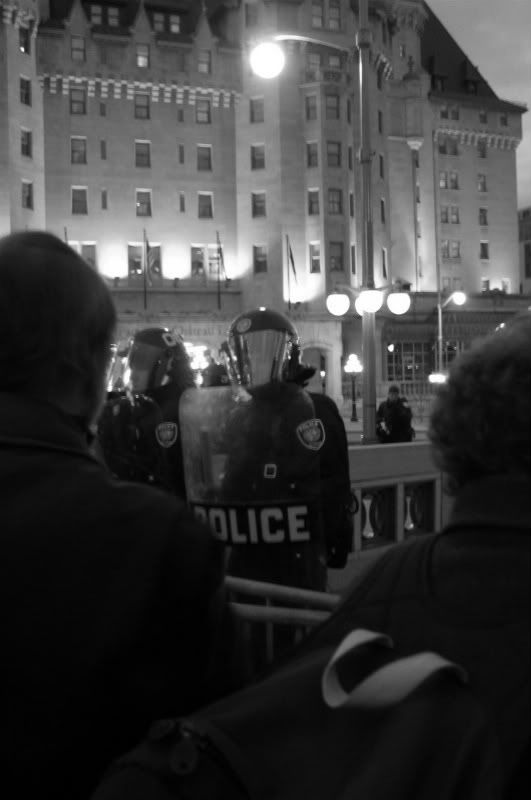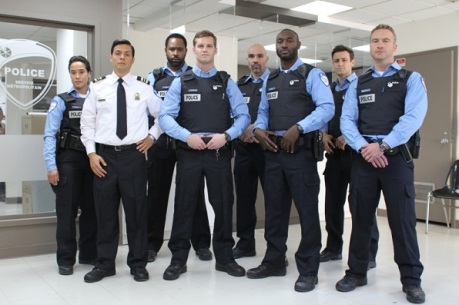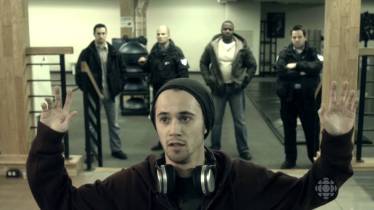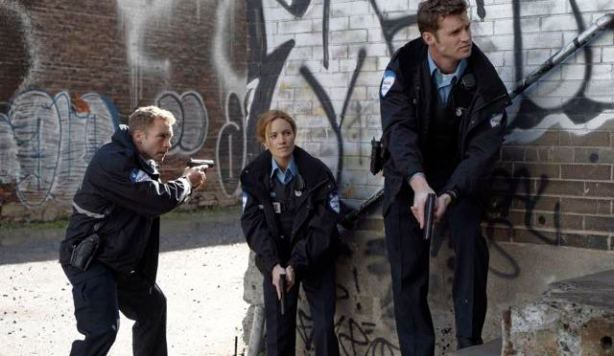Police dramas have explored the most urgent complications attending the role of law enforcement in a democratic society. Cop shows have trained a critical gaze on police authority by depicting corruption and the limits and abuses of police power, as well the substantial personal and emotional costs of working in law enforcement for the officers themselves (Grant, 1992). As agents of the state, cops have the ability to arrest citizens and compel them to obey commands (“pull over!” “freeze!”), but they are also public servants required to uphold the law as it exists. Police shows frequently figure this relationship as a tension between the institutional constraints of the “system” and the cops’ own personal pursuit of justice, presenting police officers as rule-breaking individualists whose own private moral code potentially supersedes their devotion to the law or their tolerance for the bureaucracy of the justice process (White, 2008). In many cases, this intolerance is presented as a justified form of anger against a system hamstrung by regulations that favour criminals over victims. There are several television shows both Australian and American which portray police in different ways. This includes both positive and negative depictions, which allows us to come to our own conclusions about what the police force is really like. Some of these shows are based on factual evidence and documentaries and others are just fictional dramas to show us the exciting and glamorous lives that come with being a police officer. Certain fictional dramas have also come to show police officers as being corrupt and taking advantage of the power they hold but in my opinion this is not just fictional but rather a reality that must be dealt with in order to clean up crime in our streets (Grant, 1992).
[INSERT “THE SHIELD PIC 1”]
The Shield is a prime example of a “cop show” where there is a team of officers who represent the face of evil in entertainment media. Alonzo and Mackey are menacing, rough cops who rule their urban environment like the street gangs and criminals who live in the same area. Mackey, however, is not a cowboy struggling to dish out justice in an untamed land. Nor is he a Dirty Harry, forced to operate outside the law because the justice system ties his hands in dealing with those who have no fear of the law (Grant, 2002). Instead, Mackey takes more than a little glee in beating suspects, planting evidence, stealing from criminals, taking payoffs, setting up his fellow officers to take the fall for his crimes, and playing mind games with investigators seeking to uncover his misdeeds. And yet, there are a significant number of moments in Mackey’s life where he is driven more by the need to catch the bad guy at all costs than by selfishness. There are plenty of evil story lines in The Shield for Mackey. For example, he is willing to participate in theft in an effort to get his strike team buddies some reward, even as he does not particularly desire it at that moment for himself. In another theft scheme, Mackey desperately wants dirty money, but for the purpose of sending his autistic son to a special school and getting him a skilled tutor. It should be recalled that this is a denial of self that Alonzo does not evidence as he portrays evil-for-itself. While Mackey does commit crimes and does not enforce the law to the fullest extent in some cases, his actions are typically tempered by a higher calling of some perceived greater good or, post-dirty deeds, are tinged with remorse. For example, he executes a fellow police officer; that behaviour is evil. Mackey does so because the officer was planted on his team by a boss that cares largely about a coming election and the great publicity that a “dirty cop” arrest would bring to his campaign. Later, Mackey is haunted by the killing, which sets him up as not evil but vulnerable and, oddly, even righteous. This quality makes Mackey complex, beyond good and evil. Moreover, what sets Mackey apart from Alonzo is the balancing act between good and evil that Mackey must play an act that Alonzo doesn’t see the need to do. In films, cops are represented as being wholly good or wholly bad, where both do not meet (Grant 1992). That is the key to The Shield, to explore the ambiguity.
[INSERT “THE SHIELD PIC 2”]
Joe Clarke, an African American training officer with a propensity for exacting extreme brutality on suspected criminals of colour, is also a bad cop in the show. Like Alonzo, Joe has a deadly, violent temper that is displayed through fearsome beatings. Joe, is no longer a member of the police force because of a beating he gave a young Latino and suspected drug dealer. Joe’s rage against the victim can only be quelled once the young man is dead; a murder that Joe forces Mackey into committing, and an act that Mackey must suffer for. Therefore, unlike Alonzo, and now Joe, Mackey’s crimes are never purely self-serving as he eventually expresses some remorse about the manner in which he has to, or is forced to, to conduct law enforcement. Additionally, Mackey is tempered by his fellowship with his strike team, colleagues, and other more forthright detectives. In the end, it is Mackey’s allegiance to others, his sense of fellowship that requires him to consistently choose what he believes is the good that serves others rather than himself. Taken together, the depictions of Mackey and Jake (also a cop) in contrast with Alonzo and Joe suggest an inescapable racial essence with Blackness distinct from Whiteness and, thus, the element in making sense of each character’s relationship with evil (Grant, 2002). Mackey is constructed as a bad cop with good intentions, while Jake is a good cop trying to remain so in the face of evil (Alonzo). And Alonzo and Joe are bad cops, with no good intentions. Overall, The Shield utilizes a discourse that emphasizes racial signifiers and class positioning to portray a social environment that justifies the presence of such troublesome policing.
The 1973 Knapp Report stated that there are three primary types of police officers, the meat-eaters, the grass-eaters and the birds. The meat-eaters constitute a small percentage of all officers who aggressively pursue scenarios that they can exploit for financial gain. Big payoffs are found in activities such as gambling and narcotics. Lucrative gains corrupt the meat-eaters to the point that the only way to check their abuses is by releasing them from duty and possibly prosecuting them (Comack, 2012). Grass-eaters are those officers who do not accept payoffs or gratuities. They make up the overwhelming majority of officers on the force. On the other hand, the birds keep out of it and are not directly involved. Although they may have knowledge about the situation, they choose not to interfere or say anything. Majority of the officers in The Shield are seen as meat-eaters as they engage in activities that would not be acceptable or appropriate for the everyday duties of a normal “good” cop.
According to Comack, there are two basic theories that have been posited to explain police corruption, the rotten apple theory and the environmental perspective. According to the rotten apple theory, there are a few bad apples within police departments who were not properly screened and came into the department susceptible to corruption. The environmental perspective suggests that police corruption is a reflection and a result of the political corruption in cities. Politically corrupt cities create environments that are conducive to police misconduct.
Since the 19th century, the aim has been to sell the police as crime fighters, downplaying the service function and problems of legality. The depiction of police in television dramas today is not necessarily realistic or positive in any way, shape or form. Rather I believe it is the total opposite of this. In almost every crime television series, the police almost always apprehend the suspect and solve the crime. This portrayal is far from the truth and in reality every single crime doesn’t get solved. Most television series about police officers have turned into a soap opera where it follows the lives and relationships of individual people in the force, not to mention that everything is blown way out of proportion. Executive producers of crime television dramas glamorize the life of a police officer by adding all the excitement of chasing criminals in cars, shooting at every chance they get, hot pursuits and solving every crime. However, in reality being a police officer involves a lot of tedious paperwork and writing up reports to explain every single detail that happened when they were called out to a disturbance or alleged crime. Police are portrayed as masculine, smart, full of martial arts skills, fit, aggressive, action packed, always willing to shoot at suspects and so on. The sad reality is that the public want to see all the excitement and glamour of being a police officer because no one wants to watch a show where police are filling out forms and writing up boring reports. Then does all this glamour and excitement encourage people to join the police force in order to get justice or for the simple reason that they get to shoot at someone or chase a suspect in a high speed car pursuit? In reality, police often deal with false reporting of crimes where valuable resources are wasted on prank callers and mediating work.
Bibliography
Comack, E. (2012). Racialized policing: Aboriginal people’s encounters with the police. Halifax, N.S: Fernwood Pub.
Grant, J. “Prime Time Crime: Television Portrayals of Law Enforcement.” Journal of American Culture, v.lS/1 (1992).
Grant, J. “The Shield,” Picturing Justice: The On-Line Journal of Law and Popular Culture, 22 May 2002. Retrieved from: <http://www.ufca.edu/pj/shield-grant.htm>
White, R & Haines, F. Crime and Criminology – An introduction, 4th edn, Oxford University Press, USA. (2008)







 Jane opting for vigilante justice rather than generally following the criminal justice system is indefinitely an indication of the show aiming for the allure of deviancy in policing, in contrast to conventional policing. Additionally, Patrick will commonly convince members of his team to engage in his elaborate plans, that he constructs in order to deceive or persuade suspects one way or another (this includes tactics such as hypnotizing them, in certain episodes) to out themselves as the killer. The same applies to interrogations, as he will pry a confession out of a suspect, that he himself has systematically narrowed down as the wrongdoer, by any means necessary. This being the case, the manner in which interrogations are carried out is another big distinction in police procedure in the show compared to reality. The show takes place in California. As per California law, anytime an admission or confession made during police interrogation is involuntary, it is considered to be obtained through denial of due process of law (Robison, 1969, p. 740). As a result, the confession is excluded from the evidence at the trial. The show completely ignores the possibility of the evidence that Jane obtains illegitimately being thrown out. This affirms Cummins’ view that popular crime drama shows are “full of procedural errors. (p. 5).
Jane opting for vigilante justice rather than generally following the criminal justice system is indefinitely an indication of the show aiming for the allure of deviancy in policing, in contrast to conventional policing. Additionally, Patrick will commonly convince members of his team to engage in his elaborate plans, that he constructs in order to deceive or persuade suspects one way or another (this includes tactics such as hypnotizing them, in certain episodes) to out themselves as the killer. The same applies to interrogations, as he will pry a confession out of a suspect, that he himself has systematically narrowed down as the wrongdoer, by any means necessary. This being the case, the manner in which interrogations are carried out is another big distinction in police procedure in the show compared to reality. The show takes place in California. As per California law, anytime an admission or confession made during police interrogation is involuntary, it is considered to be obtained through denial of due process of law (Robison, 1969, p. 740). As a result, the confession is excluded from the evidence at the trial. The show completely ignores the possibility of the evidence that Jane obtains illegitimately being thrown out. This affirms Cummins’ view that popular crime drama shows are “full of procedural errors. (p. 5).


 The media acts as agents of reform. By painting a picture of deviance, corruption or injustice, “media stories contribute to the sense of urgency regarding the need for action to combat such corrupt or unjust practices”(Chan,1995). Organizations whose deviance is being exposed are capable of, and are engaged in, shaping ,and developing public discourse to minimize damage to their image, as well as to project a sense of order and control by reporting on actions being undertaken to fix the problem. There are two cultures of police reporters. There are the inner circle reporters who typically work for popular media outlets and who are trusted by the police to carry stories which are more likely to boost the popular image of the police. The outer circle reporters typically work for quality media outlets and are prepared to engage in investigative reporting and present stories which expose deviant police practices. Typically, police forces seek to enhance their image by having media units in charge of giving information to the media. When police deviance becomes a major public issue through media coverage, police organizations must seek access to the media to effect damage control. Public scandals also require immediate repair work within police organizations. Since scandals threaten to expose organizational weaknesses and reveal systemic abuses, organisational representatives must restore and bolster up the ”myth system”. They do so by attempting to minimize the issue, by claiming that a problem was caused by a few individuals, and critics may insist that it was not a matter of a few rotten apples, but a rotten barrel. Television images are powerful and convincing. Viewers may have read or heard about the problems of police, but television allows the audience to see the problems as if they were there. The television images are particularly revealing, and where there are clear breaches of rules or regulations, this is extremely embarrassing for the force if portrayed on t.v (Chan,1995).
The media acts as agents of reform. By painting a picture of deviance, corruption or injustice, “media stories contribute to the sense of urgency regarding the need for action to combat such corrupt or unjust practices”(Chan,1995). Organizations whose deviance is being exposed are capable of, and are engaged in, shaping ,and developing public discourse to minimize damage to their image, as well as to project a sense of order and control by reporting on actions being undertaken to fix the problem. There are two cultures of police reporters. There are the inner circle reporters who typically work for popular media outlets and who are trusted by the police to carry stories which are more likely to boost the popular image of the police. The outer circle reporters typically work for quality media outlets and are prepared to engage in investigative reporting and present stories which expose deviant police practices. Typically, police forces seek to enhance their image by having media units in charge of giving information to the media. When police deviance becomes a major public issue through media coverage, police organizations must seek access to the media to effect damage control. Public scandals also require immediate repair work within police organizations. Since scandals threaten to expose organizational weaknesses and reveal systemic abuses, organisational representatives must restore and bolster up the ”myth system”. They do so by attempting to minimize the issue, by claiming that a problem was caused by a few individuals, and critics may insist that it was not a matter of a few rotten apples, but a rotten barrel. Television images are powerful and convincing. Viewers may have read or heard about the problems of police, but television allows the audience to see the problems as if they were there. The television images are particularly revealing, and where there are clear breaches of rules or regulations, this is extremely embarrassing for the force if portrayed on t.v (Chan,1995).